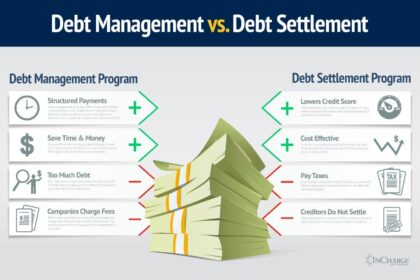As the cost of higher education continues to rise, the dream of attending college can feel like a distant star, shimmering beautifully yet frustratingly out of reach. For many families, the thought of financing a college education brings a whirlwind of emotions, from excitement to anxiety. Yet, amid the challenges, lies a path to empowerment: saving for college. This journey requires foresight and planning, but with a strategic approach, you can transform daunting tuition figures into attainable goals. In this article, we’ll explore the essential strategies, tools, and tips to help you navigate the landscape of college savings, ensuring that the bright future you envision for your child or yourself is not just a dream but a reality within your grasp.
Budgeting Tips
Creating a financial roadmap for college can feel overwhelming, but with the right strategies in place, it can also be an empowering journey. Here are some practical to help you navigate your way towards that goal:
- Set a clear savings target: Determine how much money you’ll need for tuition, books, and living expenses. Aim for a specific dollar amount that feels achievable over time.
- Open a dedicated savings account: Keep your college fund separate from your everyday expenses to track your savings more effectively.
- Automate your savings: Transfer a fixed amount to your savings account each month. This way, you prioritize your college fund without having to think about it constantly.
- Cut unnecessary expenses: Review your current spending and identify areas where you can save, such as dining out, subscriptions, and impulse buys.
Another effective technique involves engaging in a side hustle, which can accelerate your savings without a hefty time commitment. Consider these options:
| Side Hustle | Potential Earnings |
|---|---|
| Freelance Writing | $20-$50 per article |
| Pet Sitting | $15-$30 per hour |
| Tutoring | $25-$60 per hour |
| Online Surveys | $1-$5 per survey |
Utilizing these strategies can not only alleviate financial stress but also instill a sense of responsibility and achievement as you approach your college aspirations.

Debt Management
Managing debt effectively is essential for any family planning to save for college. Understanding the difference between good debt and bad debt can help prioritize financial decisions. Good debt, such as student loans with favorable terms or a mortgage, can provide opportunities for long-term investment, while bad debt, like high-interest credit cards, can hinder your ability to save. To better balance your finances, consider the following strategies:
- Create a budget: Outline your monthly income versus expenses to track areas for savings.
- Pursue debt consolidation: This can lower your interest rates and simplify your payments.
- Prioritize debt repayment: Focus on paying down high-interest debts first.
Additionally, it’s beneficial to implement saving techniques that keep your long-term educational goals in sight. Setting up a dedicated savings account for college can reinforce the importance of financial discipline. Establish a timeline for your savings goals, and to encourage contributions, consider utilizing a simple savings plan illustrated below:
| Year | Monthly Savings Goal | Estimated Total |
|---|---|---|
| 1 | $100 | $1,200 |
| 2 | $150 | $3,600 |
| 3 | $200 | $7,200 |
| 4 | $250 | $12,000 |

Saving for Retirement
When it comes to planning for the future, setting aside funds for retirement is not just wise—it’s essential. Here are a few strategies to consider:
- Start Early: The sooner you begin to save, the more you’ll benefit from compound interest.
- Employer Contributions: Take full advantage of any matching contributions from your employer; it’s essentially free money.
- Diverse Investments: Rather than putting all your eggs in one basket, diversify your portfolio across different asset classes.
- Regular Reviews: Periodically reassess your retirement plan as life circumstances and market conditions change.
Budgeting for retirement doesn’t have to be daunting. Establishing a dedicated retirement account can significantly enhance your financial future. Consider the following options:
| Account Type | Benefits |
|---|---|
| 401(k) | Tax advantages & employer matches. |
| IRA | Tax-deferred growth & flexible investment options. |
| Roth IRA | Tax-free withdrawals in retirement. |

Emergency Fund Planning
When planning for unexpected expenses in the context of college savings, establishing an emergency fund is crucial. This financial buffer can help you manage unforeseen costs that could derail your educational goals. Here are some essential benefits of having an emergency fund:
- Peace of Mind: Knowing you have a safety net allows you to focus more on academics without financial stress.
- Flexibility: An emergency fund offers options when surprises arise, whether it’s a medical bill or necessary repairs that can impact your education.
- Financial Discipline: Regularly contributing to an emergency fund helps cultivate good savings habits that can benefit you throughout your life.
To effectively build your emergency fund while saving for college, consider setting a realistic savings goal based on your expected costs. A helpful strategy might include breaking down your goals into manageable monthly contributions. The following table outlines a simple plan:
| Monthly Savings Goal | 3-Month Target | 6-Month Target |
|---|---|---|
| $50 | $150 | $300 |
| $100 | $300 | $600 |
| $200 | $600 | $1,200 |
Utilizing this framework enables you to steadily contribute to your emergency fund, ensuring you remain prepared for whatever challenges may arise during your journey towards higher education.
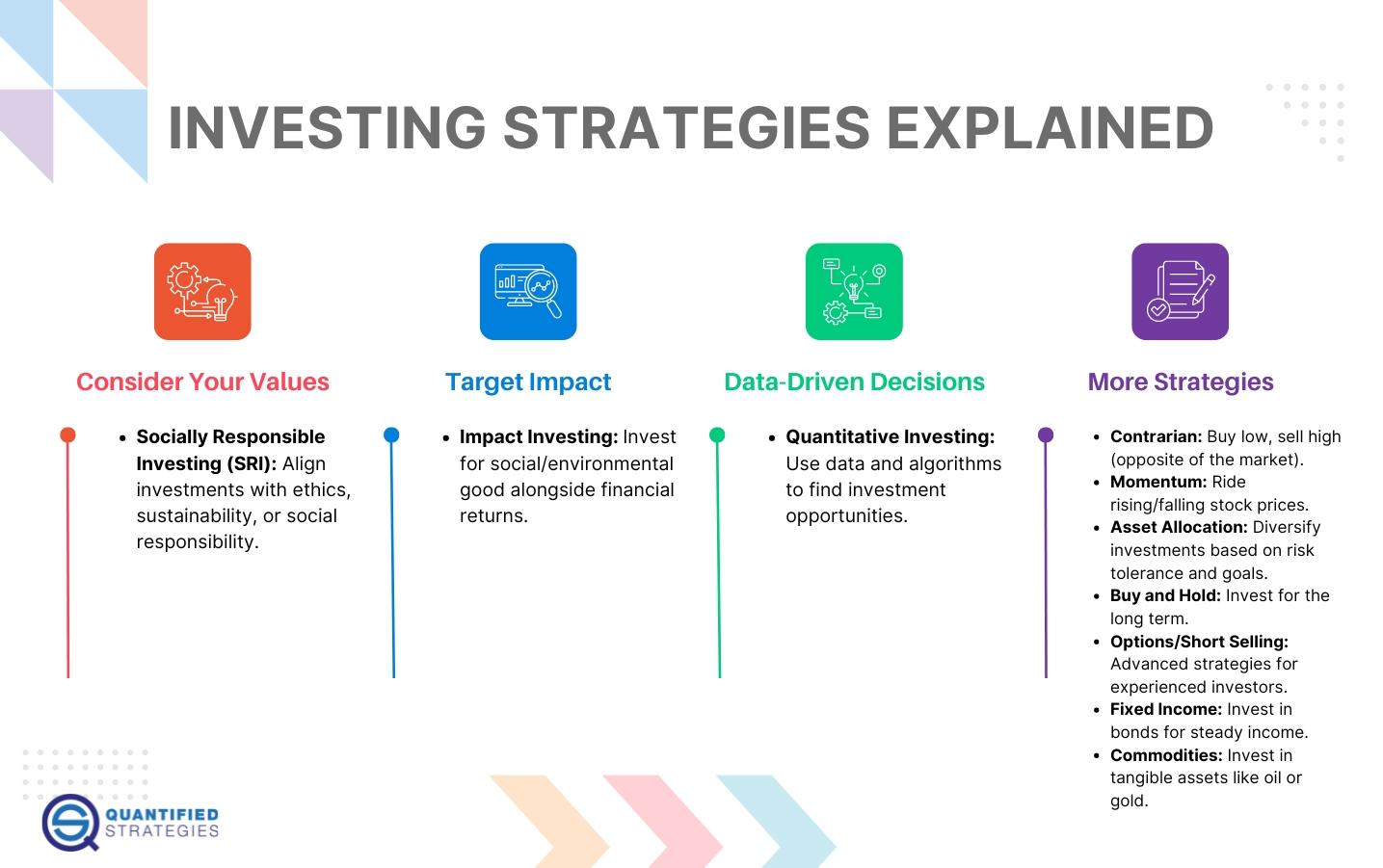
Investment Strategies
Investing for college can be an exciting yet daunting prospect for parents and students alike. To secure a bright academic future, consider diversifying your investment portfolio with options such as 529 savings plans, Coverdell Education Savings Accounts (ESAs), and traditional investment accounts. Each of these vehicles has its own advantages and tax implications, so it’s essential to evaluate them based on your family’s financial situation and education goals. By automating contributions to these accounts, you can take advantage of dollar-cost averaging, which helps mitigate market fluctuations over time.
Additionally, exploring investment options beyond traditional savings can yield substantial returns. Consider allocating funds toward stocks, bonds, and even mutual funds focused on education. As the college timeline approaches, gradually shifting to more conservative investments can help protect your capital. Tracking your investments through a well-structured dashboard will help you visualize growth and make informed decisions. Below is a simple layout for an investment breakdown to aid in your planning:
| Investment Type | Your Contribution (%) | Expected Annual Return (%) |
|---|---|---|
| 529 Savings Plan | 40% | 5% |
| ESAs | 20% | 4% |
| Stocks | 30% | 8% |
| Bonds | 10% | 3% |

Stock Market Investing
When it comes to funding your college education, starting a stock market investment strategy can be a smart choice. Investing a portion of your savings in stocks not only has the potential for higher returns compared to traditional savings accounts but also allows you to harness the power of compound growth over time. Consider the following strategies for effective aimed at college savings:
- Diversification: Spread your investments across various sectors to minimize risk.
- Index Funds: These can provide broad market exposure and generally carry lower fees.
- Regular Contributions: Establish a habit of investing consistently, regardless of market conditions.
As you navigate the stock market, it’s essential to stay informed about market trends and adjust your investments accordingly. Here’s a simple table to illustrate how different investment periods can affect your potential college savings, assuming an average annual return of 7%:
| Years Invested | Monthly Contribution | Total Savings at 7% Return |
|---|---|---|
| 5 | $200 | $13,498 |
| 10 | $200 | $37,688 |
| 15 | $200 | $80,758 |
| 18 | $200 | $114,393 |
With careful planning and a strategic approach to , you can set yourself up for a more secure financial future as you prepare for college expenses. By understanding risk management and taking advantage of compounding, you can make your investment journey to higher education both rewarding and fruitful.

Real Estate Investment
Investing in real estate can be a powerful way to build a financial foundation for your child’s future education. With rising tuition costs, leveraging property investments can provide a solid strategy for saving. Consider these potential avenues when exploring how to align real estate with your college savings goals:
- Rental Properties: Owning rental properties can generate a steady stream of income that can be set aside specifically for college funds.
- Trusts (REITs): These companies allow you to invest in real estate portfolios and can offer dividends that can contribute to your savings.
- Flipping Houses: Buying, renovating, and selling properties can create lump sums of money that can be directed toward educational expenses.
Additionally, keep track of your s’ overall performance to ensure that you’re on target with your savings. A well-organized approach can simplify this process. Below is a sample table that outlines how different s can yield a yearly revenue for your savings:
| Investment Type | Annual Revenue Estimate |
|---|---|
| Rental Property | $12,000 |
| REITs | $2,500 |
| Flipping Houses | $15,000 |

Credit Score Improvement
Building a robust credit profile is essential for future financial endeavors, especially when planning for college-related expenses. Improving your credit score can open doors to favorable loan terms, which may ease the burden of tuition fees and other education costs. Consider the following strategies:
- Pay bills on time: Setting up automatic payments or reminders can help ensure you never miss a due date.
- Reduce credit card balances: Aim to keep your credit utilization below 30% to positively impact your score.
- Check your credit report: Regularly review your report for errors that could be dragging down your score.
- Diversify your credit types: A mix of revolving credit and installment loans can boost your credit profile.
To further enhance your understanding of credit scoring, consider the common factors influencing your score. The table below simplifies these components:
| Factor | Impact on Score |
|---|---|
| Payment History | 35% |
| Credit Utilization | 30% |
| Length of Credit History | 15% |
| Types of Credit | 10% |
| Recent Inquiries | 10% |

Financial Independence
Building a path to financial freedom through saving for college starts with understanding your options and setting clear goals. Start early, as time is your greatest ally in accumulating funds. Consider the various types of accounts and savings plans available, such as:
- 529 College Savings Plans – Tax-advantaged accounts specifically designed for education expenses.
- Coverdell Education Savings Accounts – Allow tax-free withdrawals for educational costs from kindergarten through college.
- Roth IRAs – Though primarily for retirement, contributions can be withdrawn tax- and penalty-free for qualified education expenses.
As you determine how much to save, creating a structured savings plan is essential. Start by estimating the total cost of college, considering tuition, books, and living expenses. Use a simple table to visualize your savings target:
| Expense Type | Estimated Cost |
|---|---|
| Tuition & Fees | $30,000 |
| Books & Supplies | $1,200 |
| Living Expenses | $12,000 |
Setting a monthly savings goal based on this estimate will keep you accountable and move you closer to your vision of education without financial burden. Explore scholarships, grants, and financial aid to complement your savings, ensuring that you can focus on learning rather than debt.

Passive Income Streams
Creating is a savvy strategy that can greatly enhance your college savings plan. By investing time and resources into generating money that requires minimal effort to maintain, you can build a financial cushion for educational expenses. Here are some avenues to consider:
- Dividend Stocks: Investing in dividends-paying stocks allows your money to grow over time while providing regular income.
- Real Estate Crowdfunding: Join with others to invest in rental properties without the responsibilities of being a landlord.
- Peer-to-Peer Lending: Utilize platforms that connect borrowers with investors, giving you the potential to earn interest on your contributions.
- High-Yield Savings Accounts: While traditionally low yielding, some accounts offer better rates that can complement other investments.
Another effective way to bolster your college savings is through online ventures that can generate income passively. Start a blog that focuses on a niche you’re passionate about, or create a YouTube channel where you share content and monetize it through ads. Here’s a brief overview of popular online income sources:
| Source | Potential Earnings |
|---|---|
| Affiliate Marketing | Varies widely; can start at $100/month |
| eBooks | $500+ per book depending on sales |
| Online Courses | $1,000+ based on enrollment |
| Print on Demand | $50 to $500 per month |
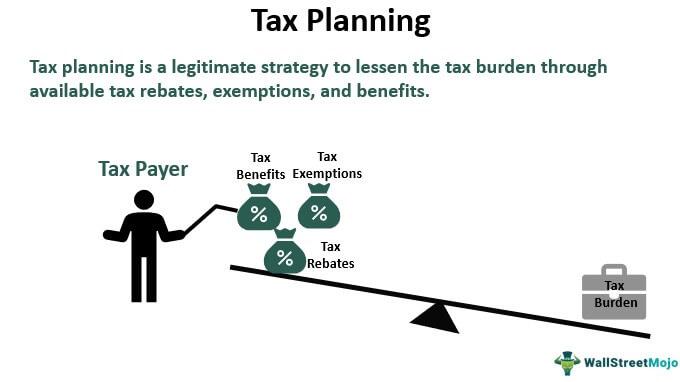
Tax Planning
Planning for college can be daunting, but proactive strategies can significantly ease the financial burden. One effective approach is to consider utilizing tax-advantaged accounts such as 529 plans. These accounts allow you to save for education expenses with the benefit of tax-free growth and tax-free withdrawals when funds are used for qualified expenses. Other options include Coverdell Education Savings Accounts (ESAs) which provide tax-free growth for education expenses as well. Here are some points to keep in mind:
- Contributions to 529 plans are often eligible for state tax deductions.
- Funds can be used for a range of educational institutions, including K-12 and higher education.
- Tax-free withdrawals can significantly enhance your savings.
Additionally, families should explore tax credits that can reduce the overall cost of education. The American Opportunity Tax Credit and the Lifetime Learning Credit can provide valuable financial relief when filing tax returns. To make the most of these credits, it’s important to keep track of qualified expenses and maintain thorough documentation. Implementing these strategies can help optimize your savings and efficiently allocate funds for future educational needs:
| Tax Credit | Maximum Benefit | Eligibility |
|---|---|---|
| American Opportunity Tax Credit | $2,500 per student | First four years of higher education |
| Lifetime Learning Credit | $2,000 per tax return | Post-secondary education |
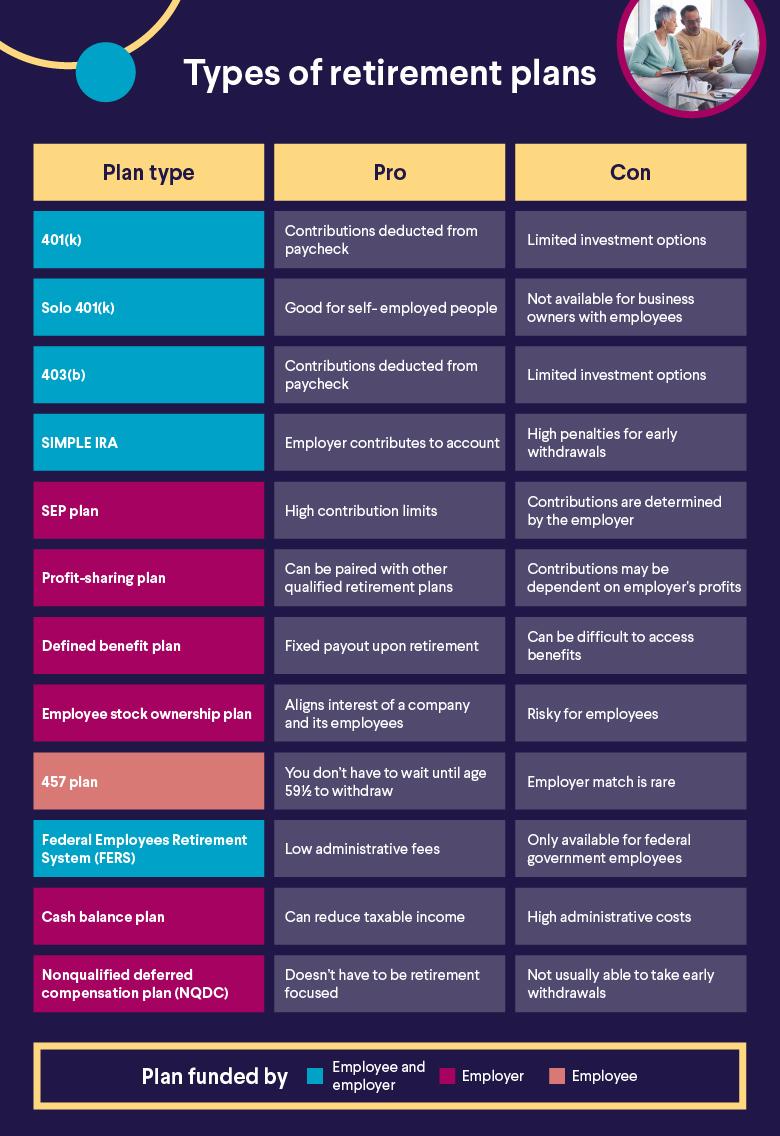
Retirement Accounts (IRA, 401k)
When it comes to planning for your child’s education, considering long-term investment options can significantly ease the financial burden. Retirement accounts such as IRAs and 401(k)s are typically designed for retirement savings, but understanding their benefits can help you make informed decisions about college funding. For instance, while these accounts have restrictions on withdrawals, they do allow for some contribution flexibility. Parents may leverage the lesser-known option of withdrawing from a traditional IRA for higher education expenses without incurring the early withdrawal penalty, as long as certain conditions are met.
On the other hand, a 401(k) may not provide the same direct benefits for college funding, but it can still play a vital role in your overall financial strategy. The funds can contribute to your financial stability, ensuring you are not burdened by debt while also saving for education. Consider these points when evaluating your options:
- Potential tax benefits on contributions and earnings.
- Early withdrawal penalties may apply, but exceptions exist for educational expenses.
- Employer matching contributions in 401(k) plans can enhance your retirement savings, indirectly affecting your ability to fund education.
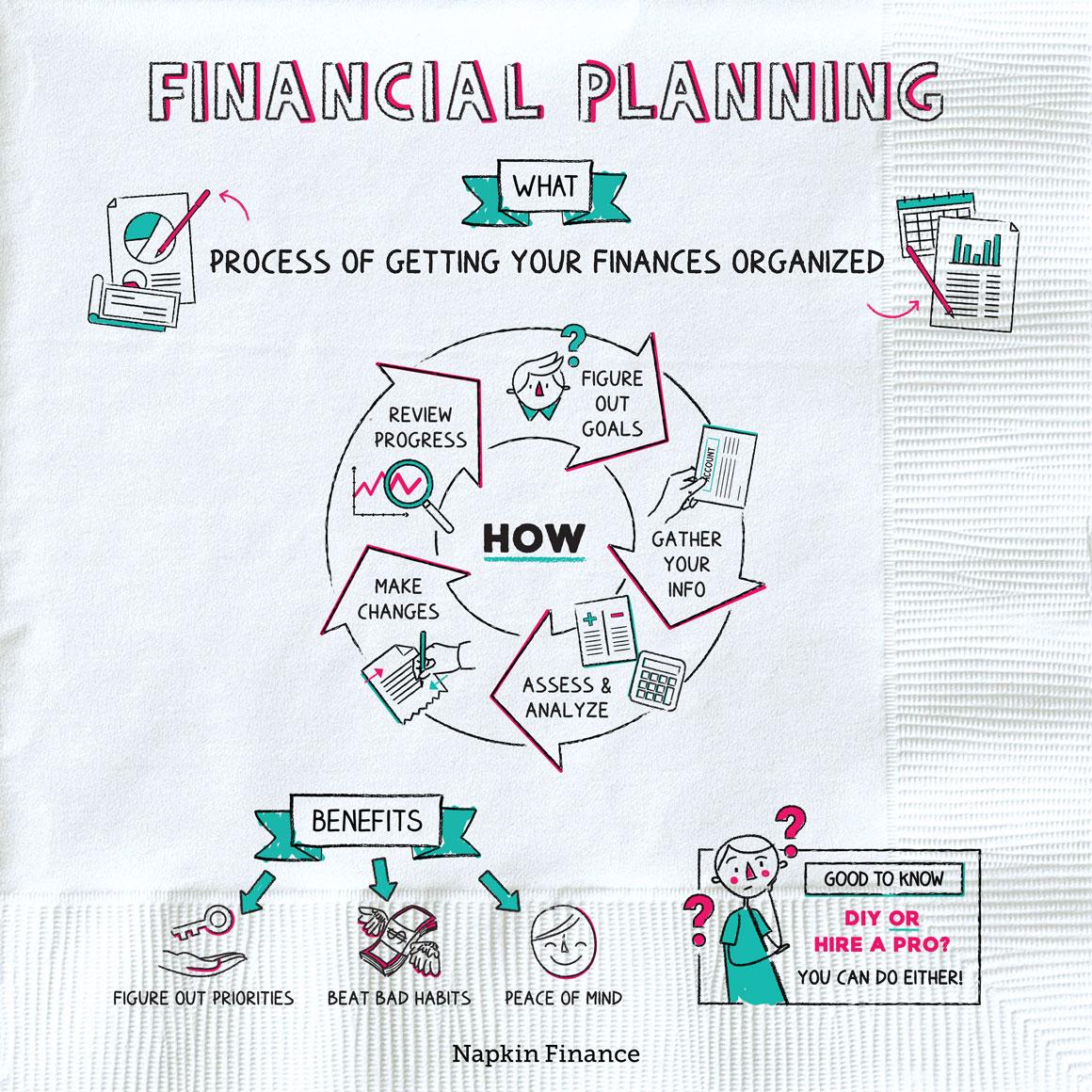
Financial Planning for Families
Investing in your child’s education is one of the most important financial decisions families can make. As costs continue to rise, it’s crucial to begin planning early and to adopt strategies that help make college more affordable. Here are some effective approaches to consider:
- 529 College Savings Plans: These tax-advantaged accounts allow you to save for college expenses and can grow over time through investment.
- Coverdell Education Savings Account: Another tax-efficient way to save that allows contributions for educational expenses, from preschool to college.
- Regular Savings Account: While less tax-efficient, a simple savings account can be a flexible option for families looking to save smaller amounts over time.
- Start Early: The earlier you begin saving, the more time your money has to grow, thanks to compound interest.
Knowing your options is key, but understanding the full picture of college costs can help in establishing a sound savings strategy. It’s essential to factor in not just tuition, but also other expenses. Consider the following table highlighting common college-related costs:
| Expense | Estimated Annual Cost |
|---|---|
| Tuition & Fees | $10,000 – $50,000 |
| Room & Board | $8,000 – $15,000 |
| Books & Supplies | $1,000 – $2,500 |
| Personal Expenses | $2,000 – $4,000 |
Creating a comprehensive financial plan doesn’t only involve saving; it also requires educating yourself and your family about potential scholarships, grants, and financial aid options. By combining savings with an understanding of the financial landscape of higher education, families can navigate college expenses more effectively.

Personal Finance Apps
In today’s digital age, managing your finances has never been easier, especially when saving for significant goals like college education. have emerged as essential tools that can help families stay organized and motivated in their college savings journey. These applications often feature budgeting tools, investment tracking, and goal-setting capabilities, allowing users to tailor their financial strategies effectively. Some popular choices include:
- Mint: Excellent for budgeting and tracking expenses.
- YNAB (You Need A Budget): Focuses on proactive budgeting to help you allocate funds efficiently.
- Acorns: Invests spare change automatically, which can be a fun way to grow savings over time.
- CollegeBacker: Specifically designed for college savings plans.
Many of these apps also offer unique features that can enhance the user experience. For instance, some provide financial education resources, tips for maximizing savings, or alerts when spending habits shift outside of set budgets. In addition, tracking your progress towards specific college savings goals can be highly motivating. The following table illustrates how different apps compare based on their key functionalities:
| App Name | Budgeting | Investment Tracking | Goal Setting |
|---|---|---|---|
| Mint | ✔️ | No | ✔️ |
| YNAB | ✔️ | No | ✔️ |
| Acorns | No | ✔️ | ✔️ |
| CollegeBacker | No | ✔️ | ✔️ |
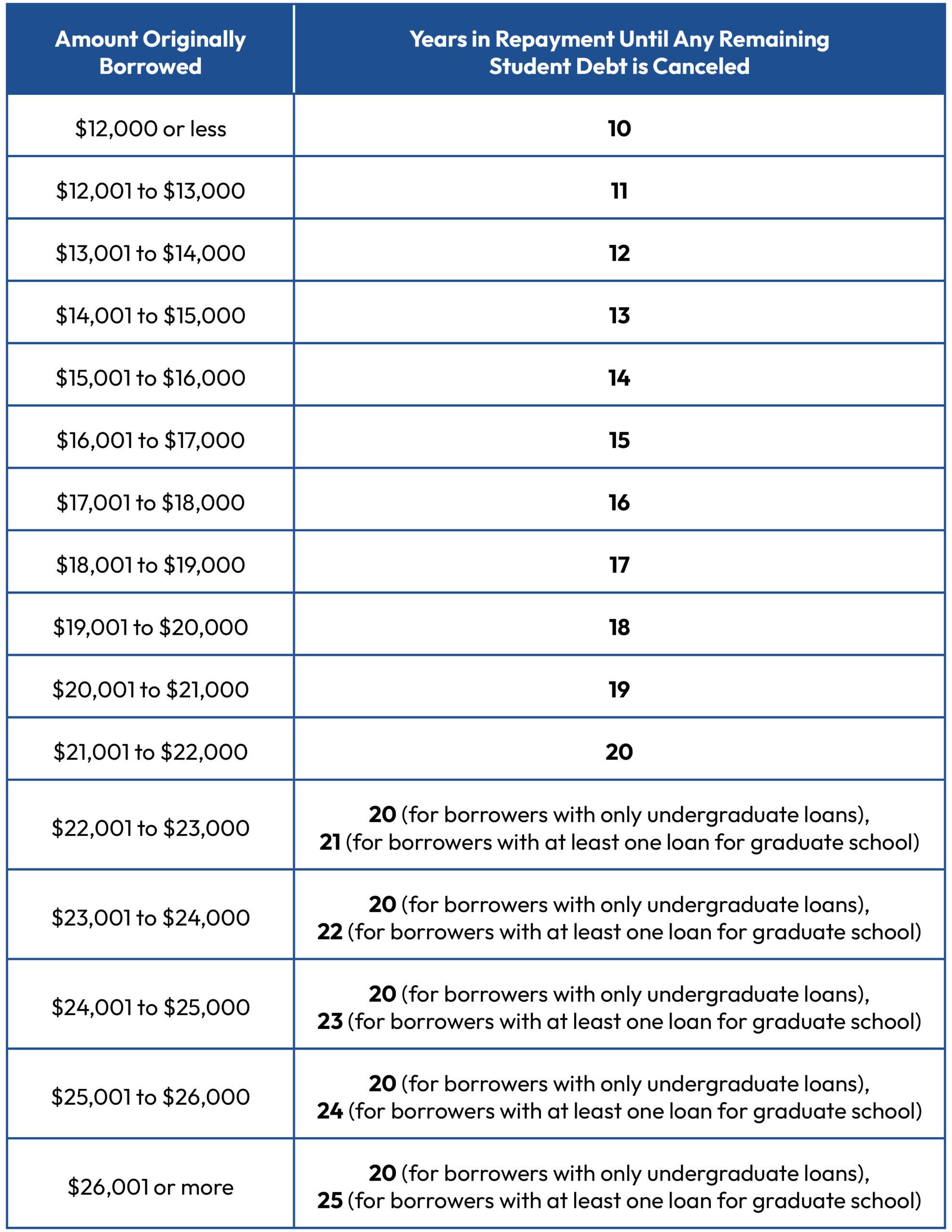
Student Loan Repayment
As the time to step into adulthood approaches, the looming shadow of student loans often becomes a significant concern for many graduates. Understanding the intricacies of repayment can ease your transition from campus life to the professional world. With various options available, it’s essential to explore your choices. Consider the following repayment plans:
- Standard Repayment Plan: Fixed monthly payments for up to 10 years.
- Graduated Repayment Plan: Lower payments at first, increasing every two years.
- Income-Driven Repayment Plans: Adjust your payment based on your income and family size.
- Public Service Loan Forgiveness: For those in qualifying public service jobs, loans may be forgiven after 10 years.
Crafting a robust repayment strategy is vital, as this can significantly impact your financial health for years to come. To aid in decision-making, here’s a simple comparison of estimated monthly payments based on various repayment plans for a hypothetical loan of $30,000:
| Repayment Plan | Monthly Payment | Total Payments |
|---|---|---|
| Standard | $318 | $38,128 |
| Graduated | Starts at $200 | $45,000* |
| Income-Driven | Varies | Dependent on income |
*Total payments may vary based on annual income adjustments.

Debt-Free Journey
Embarking on the path to financial freedom requires careful planning, especially when it comes to saving for college. Whether you’re a parent aiming to secure your child’s future or an ambitious student with dreams of higher education, laying a solid foundation can make all the difference. Begin by assessing your current financial situation and setting clear, achievable goals. Here are some effective strategies to consider:
- Open a 529 College Savings Plan: Tax-free growth that puts your money to work.
- Create a Budget: Track your income and expenses, and allocate a portion for savings.
- Automate Savings: Set up automatic transfers to your college fund to ensure consistency.
- Take Advantage of Scholarships: Research and apply for scholarships to lessen your financial burden.
As you progress in your savings journey, it’s essential to keep an eye on your goals and adjust as necessary. To stay motivated, consider visualizing your target amount and the associated benefits. Here’s a simple table to illustrate your savings timeline based on a monthly contribution:
| Monthly Contribution | Savings in 5 Years | Savings in 10 Years |
|---|---|---|
| $100 | $6,500 | $15,500 |
| $200 | $13,000 | $31,000 |
| $300 | $19,500 | $46,500 |
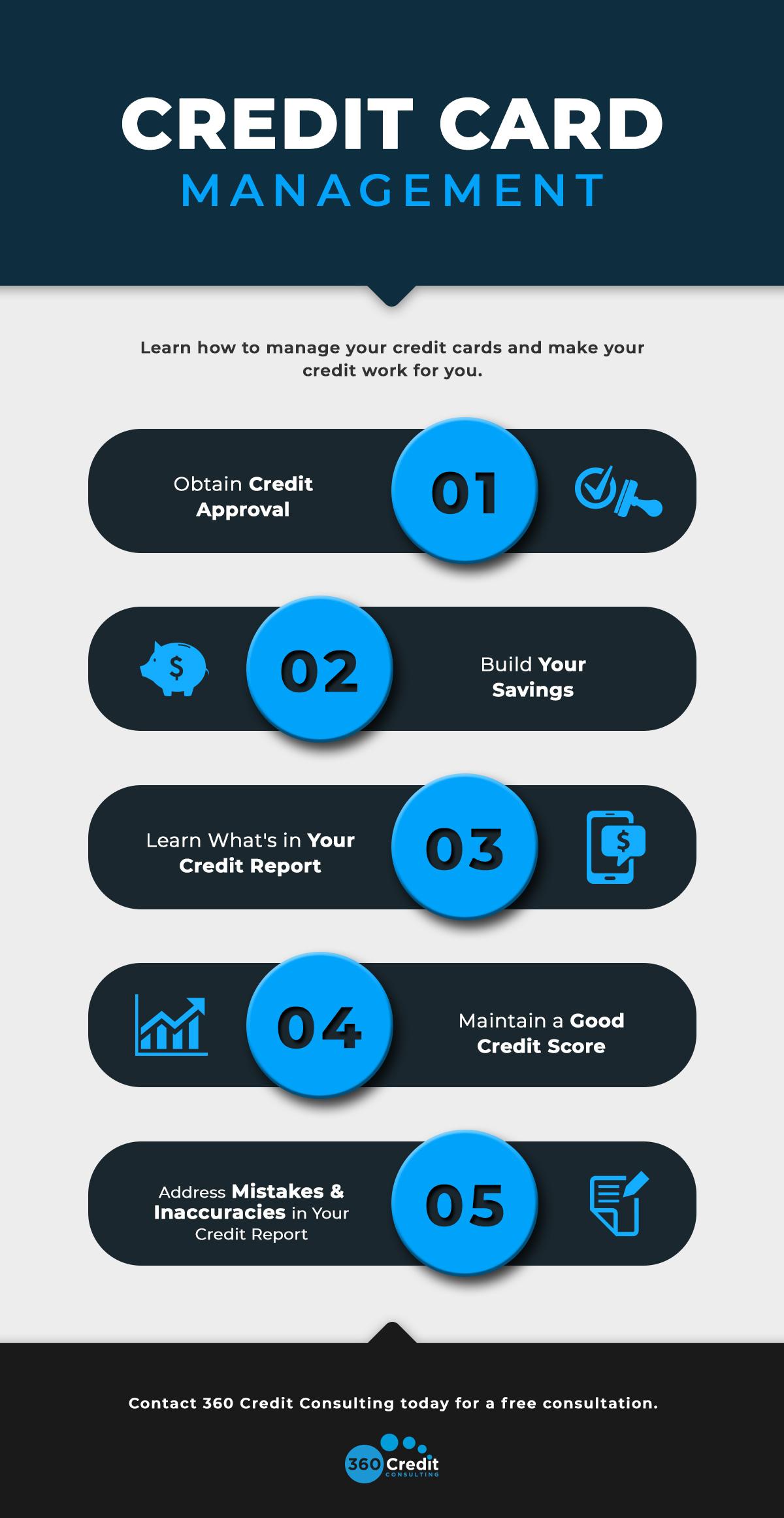
Credit Card Management
Managing credit cards wisely can play a pivotal role in saving for college. By adopting a structured approach, you can build a solid financial foundation without the burden of debt. Consider these key strategies to effectively manage your credit cards while still making headway on your college savings:
- Set a Budget: Determine a monthly spending limit that aligns with your savings goal.
- Pay Balances in Full: Avoid interest charges by paying off your credit card balance each month.
- Use Rewards Wisely: Opt for cards that offer cashback or points on purchases that you would make anyway, and direct those rewards toward your college savings.
- Monitor Spending: Regularly review your spending habits to identify areas where you can cut back.
It’s also beneficial to keep track of your credit utilization ratio, which can directly impact your credit score. A healthy score will make it easier to secure loans when it’s time to finance your college education. Here’s a simple overview of how to maintain your credit health while saving:
| Action | Frequency | Benefit |
|---|---|---|
| Review credit report | Annually | Identify errors & improve score |
| Set payment reminders | Monthly | Prevent late fees & maintain score |
| Utilization check | Quarterly | Maintain healthy credit utilization |

Budgeting for Freelancers
For freelancers, navigating the unpredictable streams of income necessitates a strategic approach to managing finances. Unlike traditional employees, freelancers face fluctuating earnings that can make it challenging to allocate funds for saving. To ensure you’re prepared for your child’s future college expenses, it’s essential to implement a budgeting system that accommodates your unique financial situation. Consider embracing the 50/30/20 rule, where you dedicate 50% of your income to needs, 30% to wants, and 20% to savings. This method helps in establishing a clear savings avenue for college funds amidst variable income.
Another effective strategy involves setting up a separate savings account specifically for college expenses. This compartmentalization not only helps curb the temptation to dip into these savings for day-to-day expenses but also fosters a disciplined savings habit. Additionally, consider utilizing tools like automatic transfers to ensure consistency. Here’s a simple breakdown of options you can explore to enhance your college savings:
| Saving Option | Benefits |
|---|---|
| High-Yield Savings Account | Higher interest rates than regular savings. |
| 529 College Savings Plan | Tax advantages for educational expenses. |
| Roth IRA | Flexible withdrawal options for education. |
By adopting these strategies, you can create a robust financial foundation that supports your freelancing lifestyle while ensuring college savings are prioritized. Remember, the key is consistency and adaptability, so regularly review your budget to make necessary adjustments as your income changes. Let your financial plan grow organically, all while keeping your child’s educational future in focus.

Frugal Living Tips
Saving for college doesn’t have to mean sacrificing your lifestyle. By adopting a few frugal living strategies, you can effectively stretch your budget while putting away money for education. Start by evaluating your current expenses and identifying areas where you can cut back. Consider the following tips:
- Create a Budget: Keep track of your income and expenses. Allocate a specific amount for college savings each month.
- Curb Dining Out: Limit the number of times you eat out and experiment with meal prepping at home. This not only saves money but can also be healthier.
- Opt for Second-Hand: Before buying new, check thrift stores or online marketplaces for used items, from textbooks to clothes.
- Take Advantage of Discounts: Look for student discounts wherever possible. Many retailers offer savings for students even before they start college.
Additionally, consider setting up a dedicated savings account specifically for college funds. This can make tracking your progress easier and help resist the temptation to dip into those savings for other expenses. A table detailing a potential savings plan can clarify how incremental contributions add up over time:
| Monthly Contribution | Total Savings in 5 Years | Total Savings with 5% Interest |
|---|---|---|
| $50 | $3,000 | $3,307 |
| $100 | $6,000 | $6,614 |
| $150 | $9,000 | $9,921 |

Side Hustles for Extra Income
In today’s world, finding ways to *boost your income* while balancing studies can significantly ease the financial burden of college. Here are some rewarding side hustles that allow students to earn extra cash without overwhelming their schedules:
- Freelance Writing: If you have a knack for words, consider writing articles or blog posts for various online platforms.
- Tutoring: Use your academic strengths to help fellow students, whether it’s in math, science, or languages.
- Pet Sitting: Combine your love for animals with a flexible job that pays well, especially during weekends.
- Online Surveys: Participate in market research and get paid for your opinions on different products.
Another fantastic avenue to explore is remote work opportunities that are increasingly popular among students. These roles typically offer flexible hours, making them ideal for busy schedules. Here’s a concise overview of popular options:
| Job Type | Potential Earnings | Flexibility |
|---|---|---|
| Virtual Assistant | Varies ($15-$30/hr) | High |
| Graphic Design | $20-$50/hr | Moderate |
| Social Media Management | $15-$40/hr | High |
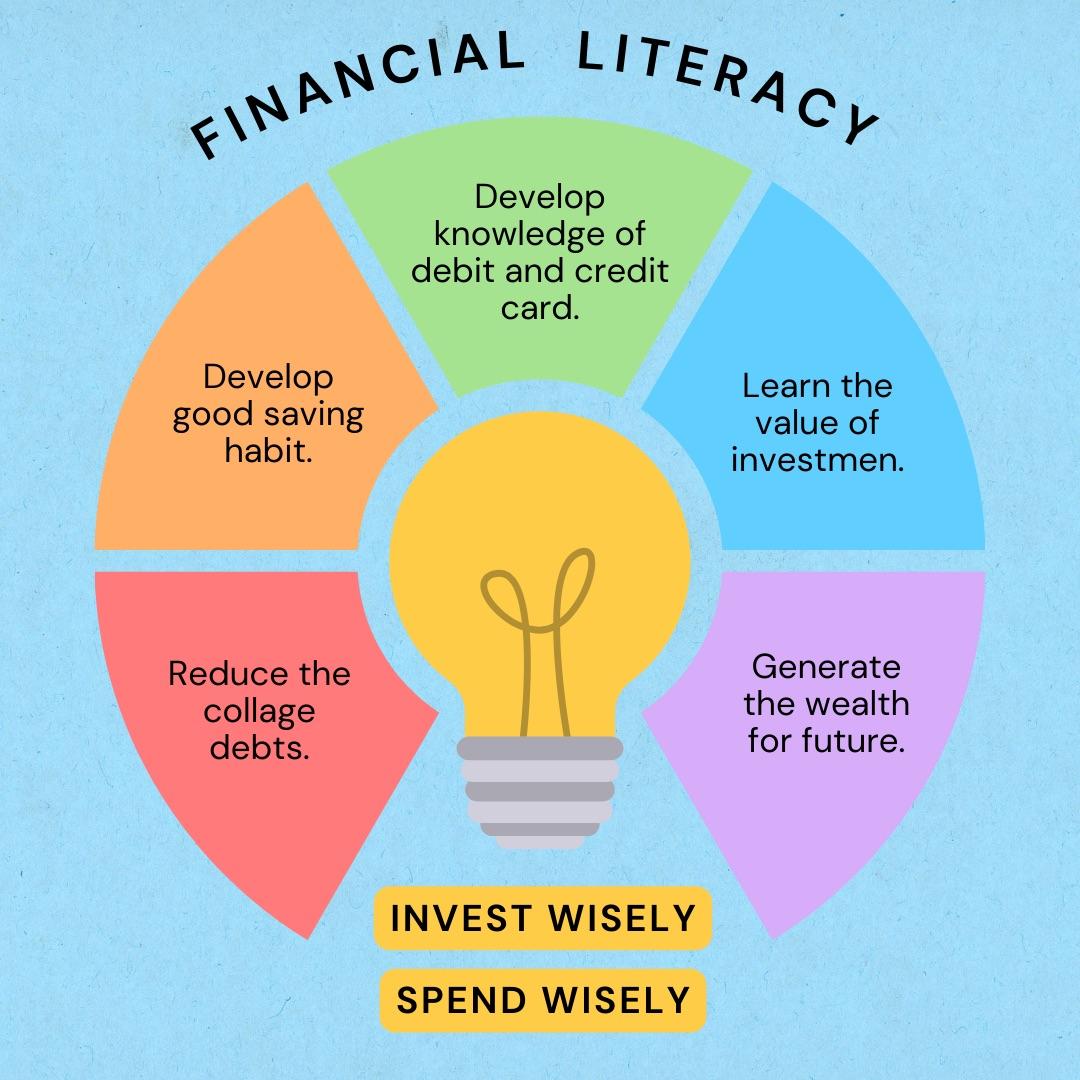
Financial Literacy Education
Thinking about the costs associated with higher education can be daunting, but with the right strategies, saving for college can become more manageable. One effective method is to start early and set clear financial goals. Consider creating a dedicated savings account specifically for college expenses. This can help separate your college funds from your other savings and spending. Additionally, make use of tools like automated transfers to your college fund every month, helping you contribute consistently without even thinking about it.
There are several options available to help maximize your savings potential:
- 529 College Savings Plans – Tax-advantaged accounts specifically for education expenses.
- Roth IRA – An investment option that allows for tax-free withdrawals for qualified educational expenses.
- Scholarships and Grants – Research and apply for financial aid opportunities that do not require repayment.
| Option | Benefits | Considerations |
|---|---|---|
| 529 Plans | Tax-free growth for education | Limited to education expenses |
| Roth IRA | Flexible withdrawal options | Contribution limits apply |
| Scholarships | No repayment required | Competitive application process |

Insurance Planning
When considering the implications of higher education, it’s essential to integrate comprehensive financial strategies into your plans. One crucial aspect of this strategy is safeguarding your investment through . By investing in education savings plans or a 529 plan, you not only prepare for tuition costs but also protect against unforeseen circumstances. This could involve life insurance or income protection policies that ensure your family can continue to contribute toward those educational expenses, even in challenging times. Some key points to consider include:
- Life Insurance: Provides a safety net for dependents, ensuring college savings are not depleted.
- Disability Insurance: Protects your income, which can be directed towards education funds.
- Comprehensive Coverage: Consider policies that offer a combination of benefits for unforeseen events affecting income.
Additionally, understanding the costs associated with higher education is essential for effective planning. Below is a simplified breakdown of common expenses that insurance can help offset:
| Expense Category | Average Annual Cost |
|---|---|
| Tuition and Fees | $10,000 – $40,000 |
| Room and Board | $5,000 – $15,000 |
| Books and Supplies | $1,000 – $1,500 |
With a solid insurance plan in place, you can approach college savings with confidence, knowing that you have a strategy to address potential risks and costs. This proactive approach not only alleviates stress but also paves the way for a more stable financial future for your student.

Long-Term Wealth Building
Investing in a child’s education is one of the most profound ways to build long-term wealth—not just in financial terms, but in opportunities and the quality of life it can create. Setting aside funds early and allowing them to grow can turn a daunting expense into a manageable one. Consider these strategies:
- Start Early: The earlier you begin saving, the more your investment can compound.
- Utilize 529 Plans: These tax-advantaged savings plans are specifically designed for education expenses.
- Automatic Contributions: Set up automatic transfers to streamline your savings process, making it a regular part of your budget.
To illustrate the potential growth of your savings, let’s look at a simple comparison of different savings approaches over 18 years:
| Investment Option | Initial Investment | Estimated Value After 18 Years |
|---|---|---|
| High-Yield Savings Account | $5,000 | $8,000 |
| 529 College Savings Plan | $5,000 | $12,000 |
| Stocks (Average 8% Return) | $5,000 | $23,300 |
This table shows how different investment vehicles can significantly impact the total funds available when it’s time to pay for college. Leveraging the power of compound interest and smart saving practices can turn your aspirations for your children’s education into reality.

Saving for College
Planning for the monumental expense of higher education can feel daunting, but with strategic saving techniques, it becomes much more manageable. Begin by assessing potential costs and setting a realistic target amount. Consider establishing a dedicated savings account specifically for college funds. Here are some effective strategies to enhance your savings:
- Start Early: The sooner you start saving, the more time your money has to grow.
- Automate Savings: Set up automatic transfers to your college fund to ensure consistent contributions.
- Take Advantage of 529 Plans: These tax-advantaged accounts can significantly boost your savings over time.
To better visualize your savings goals, creating a simple budget can help you allocate funds effectively. Below is a sample savings plan that outlines monthly contributions alongside potential growth over time:
| Year | Monthly Contribution | Total Saved |
|---|---|---|
| 1 | $200 | $2,400 |
| 2 | $250 | $6,600 |
| 3 | $300 | $12,000 |
| 4 | $350 | $19,200 |

Estate Planning
When it comes to securing your child’s educational future, creating a solid savings plan is essential. Establishing a comprehensive strategy not only eases the financial burden when college arrives but also helps in making informed decisions about how to allocate funds. Consider the following approaches to building your college fund:
- 529 College Savings Plans: Tax-advantaged accounts designed specifically for education expenses.
- Coverdell Education Savings Accounts: Flexible accounts that allow for tax-free growth when used for qualified education costs.
- Roth IRAs: Multi-purpose retirement accounts that can also serve as college savings vehicles.
It’s important to set specific savings goals based on factors such as your child’s age, the type of college being considered, and prospective tuition costs. Creating a timeline can further streamline the process, making it easier to track your progress and adjust contributions as needed. Here’s a simple breakdown to help visualize your savings journey:
| Child’s Age | Monthly Savings Goal | Estimated College Fund by Age 18 |
|---|---|---|
| 0-5 years | $200 | $43,200 |
| 6-10 years | $250 | $36,000 |
| 11-14 years | $300 | $21,600 |
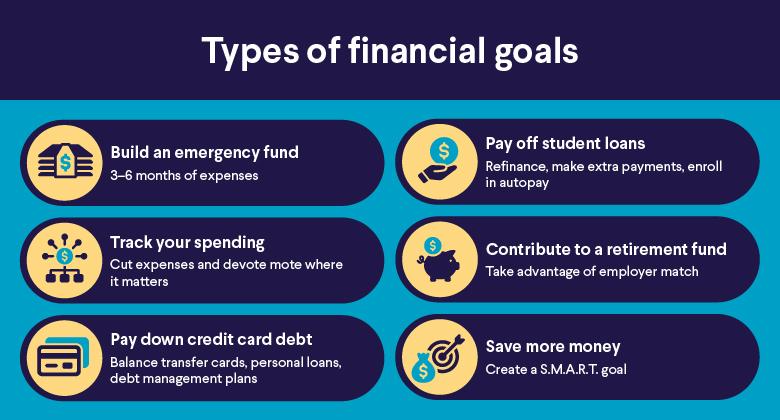
Financial Goals Setting
When it comes to preparing for college expenses, having a clear outline of your financial goals is crucial. Start by identifying the key components of college savings that will help you build a robust financial strategy. Consider the following elements that play a significant role in achieving your savings target:
- Tuition Costs – Research the average tuition fees for the colleges you are interested in.
- Living Expenses – Account for costs like housing, food, and transportation.
- Books and Supplies – Budget for academic materials that can add up quickly.
- Emergency Funds – Set aside an amount for unexpected expenses that may arise.
Once you have a clear picture of your financial landscape, create a realistic savings plan to meet your goals. This should include evaluating different savings and investment vehicles. Here’s a glimpse of effective options:
| Saving Option | Pros | Cons |
|---|---|---|
| 529 Plan | Tax advantages, high contribution limits. | Limited investment options, penalties for non-educational withdrawals. |
| Roth IRA | Tax-free growth, flexible usage. | Contributions limit, penalties for early withdrawal. |
| High-Yield Savings Account | Liquidity, minimal risk. | Lower returns compared to stocks or bonds. |

Money Management for Couples
Planning for a child’s college education requires foresight and teamwork, especially for couples who want to ensure their financial goals align. Establish a joint savings plan to create a shared vision for your child’s educational future. Both partners should agree on a monthly savings target, which can be achieved through adjustments in discretionary spending or reallocating funds from other budget categories. Some effective strategies include:
- Opening a 529 college savings plan for tax benefits.
- Contributing a set percentage of any bonuses or extra income.
- Utilizing app-based savings tools to round up spare change into college funds.
It’s also essential to create realistic projections regarding future expenses. Examine current tuition rates and apply an estimated annual increase to establish a more accurate savings goal. Collaborate to create a simple budget table that outlines your savings timeline versus projected college costs:
| Year | Projected Savings | Estimated Tuition Costs |
|---|---|---|
| Year 1 | $2,000 | $10,000 |
| Year 5 | $10,000 | $14,000 |
| Year 10 | $30,000 | $25,000 |
This collaborative effort will not only establish a solid financial foundation for your child but also strengthen your relationship as you work towards a common goal. Regularly reviewing and adjusting both savings strategies and expectations can help to keep both partners engaged and informed.

Family Budgeting
As you embark on the journey of saving for college, it’s essential to create a comprehensive budget that accounts for both current and future expenses. Start by evaluating your financial situation and identifying potential savings sources. Consider these practical steps:
- Track Monthly Expenses: Keep an eye on where your money goes each month to identify areas to cut back.
- Set Specific Savings Goals: Determine how much you need for college and establish a timeline for reaching those goals.
- Utilize College Savings Plans: Research 529 plans or other education savings accounts that offer tax advantages.
Implementing a savings strategy doesn’t have to feel overwhelming. Create a dedicated college fund and make it a priority by automating transfers to this account each month. Here’s a simple breakdown of potential contributions you might consider:
| Contribution Method | Monthly Contribution | Potential Savings in 10 Years |
|---|---|---|
| Direct Deposit from Paycheck | $200 | $24,000 |
| Tax Refund Savings | One-time $1,500 | $1,500 |
| Holiday Gift Contributions | $500 | $5,000 |

Smart Spending Habits
Implementing effective financial practices can significantly boost your savings for college. Start by setting clear goals that outline the amount you aim to save and the timeline in which you hope to achieve it. This could look like:
- Monthly saving targets – Determine how much you can set aside each month.
- Emergency fund preparation – Ensure you have a buffer to avoid dipping into college savings.
- Additional income streams – Consider side gigs or part-time jobs specifically for college funds.
Being mindful of your day-to-day expenses is key to fostering a culture of savings. Track your spending to identify trends and areas for improvement. To visualize this, a simple budgeting table can help:
| Expense Category | Monthly Budget | Actual Spending | Difference |
|---|---|---|---|
| Housing | $800 | $780 | $20 |
| Food | $300 | $350 | -$50 |
| Transportation | $150 | $120 | $30 |
| Entertainment | $100 | $90 | $10 |
Each positive adjustment leads you closer to achieving your college saving goals, and staying organized will empower you to make smarter spending decisions.

Personal Finance for Millennials
As each school year approaches, the thought of saving for college becomes increasingly urgent for many millennials. While the cost of higher education can seem daunting, understanding the various savings options can empower you to plan effectively. Start by exploring tax-advantaged accounts such as 529 plans, which allow your investments to grow tax-free. This type of account not only provides a safety net for your education expenses but also comes with an assortment of benefits, including the possibility of state tax deductions. Below is a quick overview of the advantages of a 529 plan:
| Advantage | Description |
|---|---|
| Tax-Free Growth | All earnings in a 529 plan grow free from federal tax, allowing your investment to maximize its potential over time. |
| Flexible Use | Funds can be used for a variety of educational expenses, including tuition, books, and even room and board. |
| Control Over Funds | The account owner retains control, deciding when and how funds are dispersed. |
Besides 529 plans, consider implementing a systematic savings approach by setting up automatic transfers from your checking account to your savings account designated for college expenses. This strategy encourages discipline and transforms saving into a routine rather than an afterthought. For millennials, budgeting apps can also facilitate this process by tracking your spending habits and helping allocate funds towards savings. When prioritizing savings, keep these key points in mind:
- Make saving a non-negotiable part of your budget.
- Identify and eliminate unnecessary expenses.
- Set clear and achievable savings goals to maintain motivation.

Wealth Preservation Strategies
When planning for future educational expenses, it’s essential to implement effective preservation strategies that not only safeguard your savings but also enhance their growth. Establishing a dedicated savings account, such as a 529 College Savings Plan, allows you to save tax-free and offers the potential for significant returns over time. This strategy can be maximized through regular contributions, compounded interest, and careful investment in instruments that align with your risk tolerance. Key considerations include:
- Set Clear Goals: Determine how much you aim to save based on the anticipated costs of college.
- Automate Savings: Regularly set aside a specific amount to ensure consistency.
- Diversify Investments: Opt for a mix of stocks and bonds to balance risk and growth potential.
Additionally, consider leveraging scholarships, grants, and part-time employment opportunities for your child to lessen the financial burden. Assessing your overall financial situation can provide insight into how much you can afford to set aside, thus optimizing your wealth preservation efforts. A practical way to visualize your college savings progress is by employing a simple table to track and compare your strategies:
| Strategy | Potential Benefits | Risks |
|---|---|---|
| 529 Plan | Tax-free growth, high contribution limits | Limited investment options |
| Roth IRA | Flexible withdrawals for education | Punitive withdrawal rules |
| High-Yield Savings Account | Low risk, liquidity | Lower returns compared to stocks |
Final Thoughts
As we draw the curtains on our exploration of saving for college, it’s clear that the journey to funding education is both a marathon and a collaborative effort. The path may be riddled with choices, numbers, and timelines, but armed with knowledge and a solid plan, you can navigate it with confidence. Whether you’re starting from scratch or fine-tuning an existing strategy, remember that every little bit counts.
In this age of rising tuition costs and economic uncertainty, proactive planning is your best ally. Foster open conversations about finances, leverage available resources, and don’t hesitate to seek guidance when needed. With determination and foresight, you can not only alleviate the financial burden of higher education but also empower future generations to pursue their academic dreams without the weight of excessive debt.
So, take a deep breath, gather your resources, and embrace the journey ahead. After all, investing in education is one of the most valuable decisions you can make—not only for your child but for the future of our society as a whole. Here’s to building bright futures, one savings account at a time!



